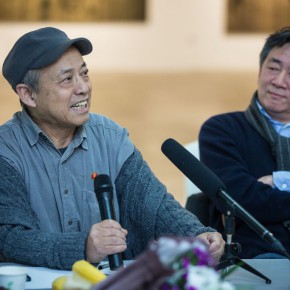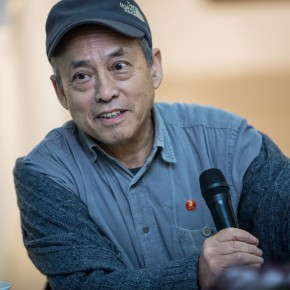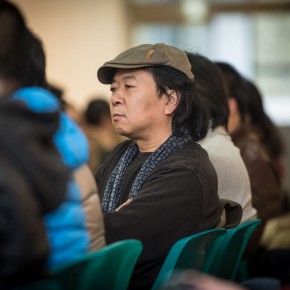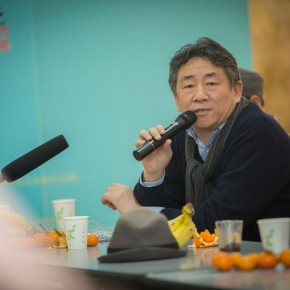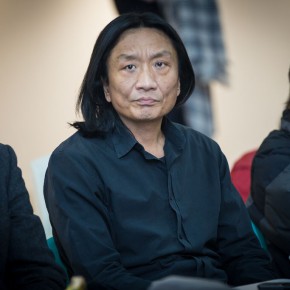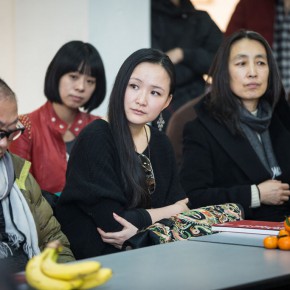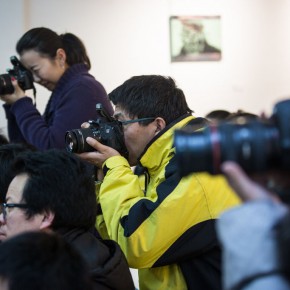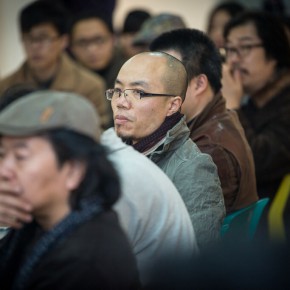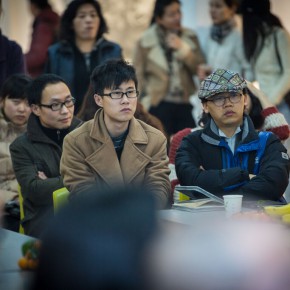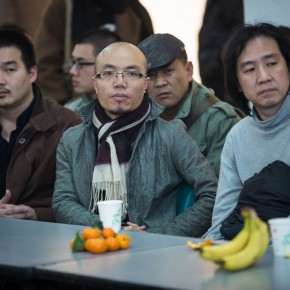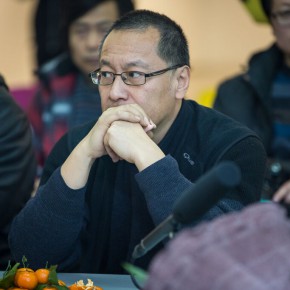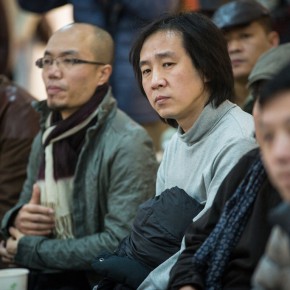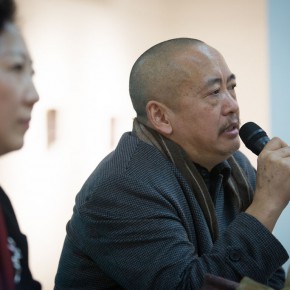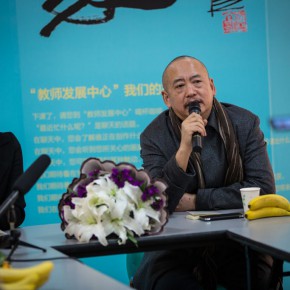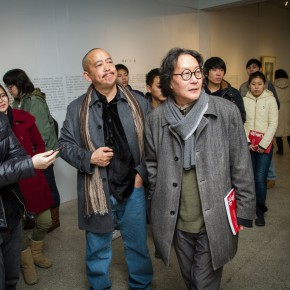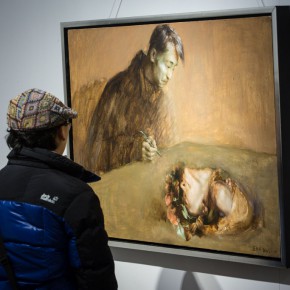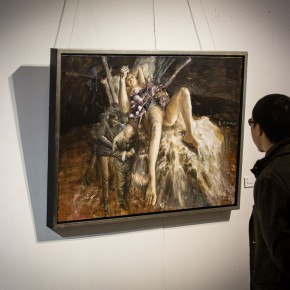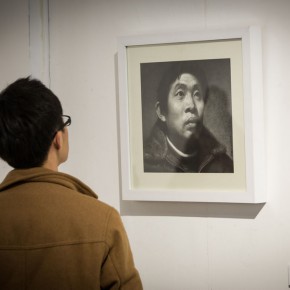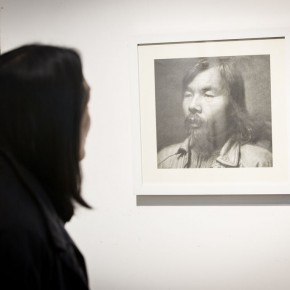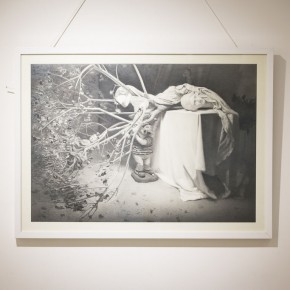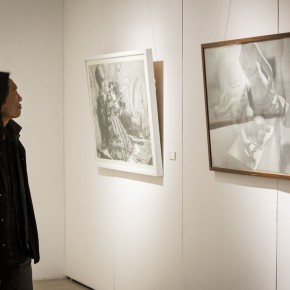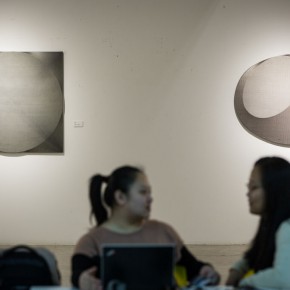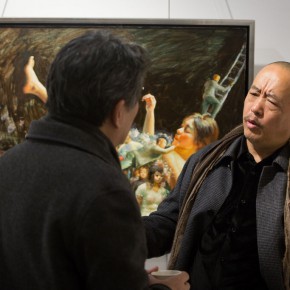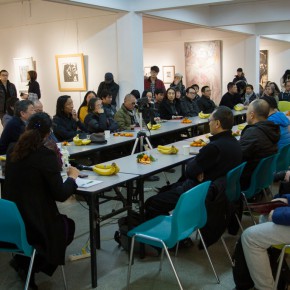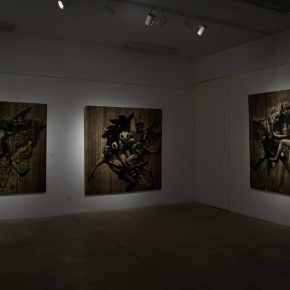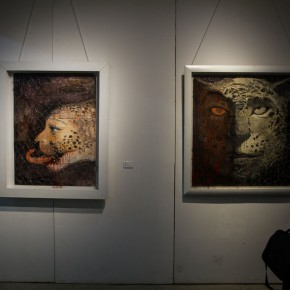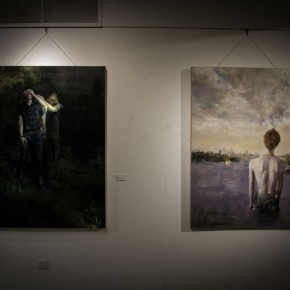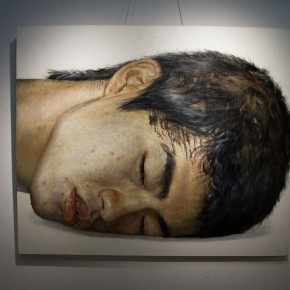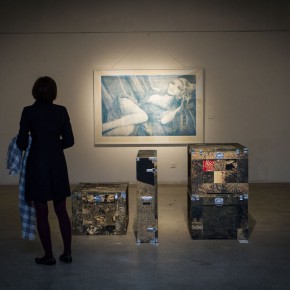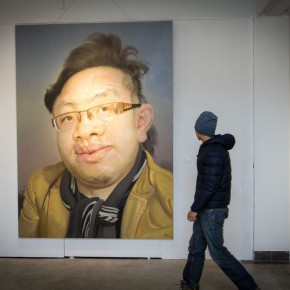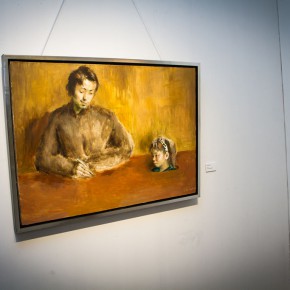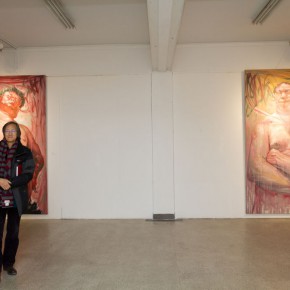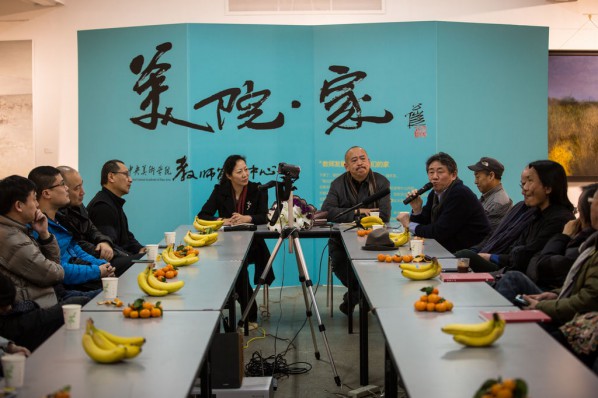
At 2:30 pm on January 3, 2014, “Carry the Tiger down the Mountain – Works of Wang Huaxiang and His Students” touring exhibitions officially opened the fourth show at the Teaching Exhibition Hall of CAFA. The exhibition is one of the “Faculty-Student Series Shows” organized by The Permanence Gallery, and Tan Ping serves as the academic director, exhibiting a variety of art forms covering oil paintings, prints and drawings by Wang Huaxiang and more than 30 students including well-known artists Xin Dongwang, Yin Zhaoyang, and more importantly, through the exhibition the audience can get a glimpse of Wang Huaxiang’s art educational ideas and achievements through the decades.
At the same time, hosted by the Teacher Development Center of CAFA, “Persisting and Transcending the Reflection of Chinese Art Education” exchange meeting was also held in the exhibition hall. The Teacher Development Center of CAFA was established in June 2013, mainly providing an academic exchange platform for the teachers of CAFA, it has held several discussions since it was established, while this exchange meeting was the final academic activity of the semester.
The meeting was presided over by Wang Huaxiang, teachers Tan Ping, Sun Jingbo, Yuan Yunsheng and Su Xinping as well as students of Wang Huaxiang such as Li Changlong, Huang Yang, etc., who participated in the meeting, in addition to attracting a lot of students of the Academy to listen to the exchange.
Wang Huaxiang graduated from the Department of Printmaking, CAFA in 1988 and taught in the school, although he was a teacher of the academy, he was dissatisfied with the depressing atmosphere and teaching system of the Soviet Union’s pattern in the academy, thus he published his own art educational book “Following the Wrong” in 1993, and practiced the theory in his teaching, making him the pioneer of art teaching innovation at that time.In 1999, Wang Huaxiang founded Feidi Art Workshop in Changping District of Beijing, and the backward teaching system has yielded positive results in consolidating ideas and practice. Years later, his students had created a large number of works which are neither like Wang Huaxiang’s artistic style nor consistent with the standard of the academy, but from which we lucidly feel the existent artists are unique, in Wang Huaxiang’ own words, his exploration is “following the wrong”, and also is a process of “following the right”.
In the meeting, Tan Ping said Wang Huaxiang had always searched for the opposite, and his personality also inspired his unlimited creative enthusiasm, he introduced the experience of searching for the opposite into his creation, exploring and creating the teaching idea of “following the wrong”. Academy teaching emphasizes the whole picture, starting from the perspective of the whole, while Wang Huaxiang starts from the part, and this creative thinking is reflected in both the drawing and printmaking creations. Art education is originally open and free, while the teaching experiment of Wang Huaxiang is very standard and rigorous, even more academic compared with the teaching of other art speciaists ( lecturers). Sun Jingbo said he was initially impressed by Wang Huaxiang’s graduation creation “Guizhou Person”, he felt Wang was rich in exploration spirit. He also affirmed that Wang Huaxiang’s teaching of drawing inspired the students’ interest to discover the personalities of the objects, injecting their interest into their creations.
Su Xinping thought Wang Huaxiang’s teaching approach of “following the wrong” put forward a concept and method of “seeing the big from the small, starting from the part to the whole” which was different from traditional training and the method of the academy that starts from the whole then moves to a part, and returns to the whole, and it actually stimulated many people’s potential ability to quickly capture their unique personal feelings of the objects, and also really inspired individual sensitive genes, to awaken people’s passion and desire.
The keynote of the exchange meeting is to borrow Wang Huaxiang’s teaching exhibition to reflect Chinese art education, which is the theme of the “Carry the Tiger down the Mountain” exhibition, these activities neither analyse cases nor seek a conclusion, but ask the question about what traditional Chinese art education should inherit? In the present environment, how will it develop? What is innovation? It makes the whole teaching and creative environment full of freedom and a dynamic personality.
The exhibition will continue to January 8, 2014.
Journalist: Zhang Wenzhi, Photo: Hu Zhiheng/CAFA ART INFO
Translated by Chen Peihua and edtied by Sue/CAFA ART INFO



